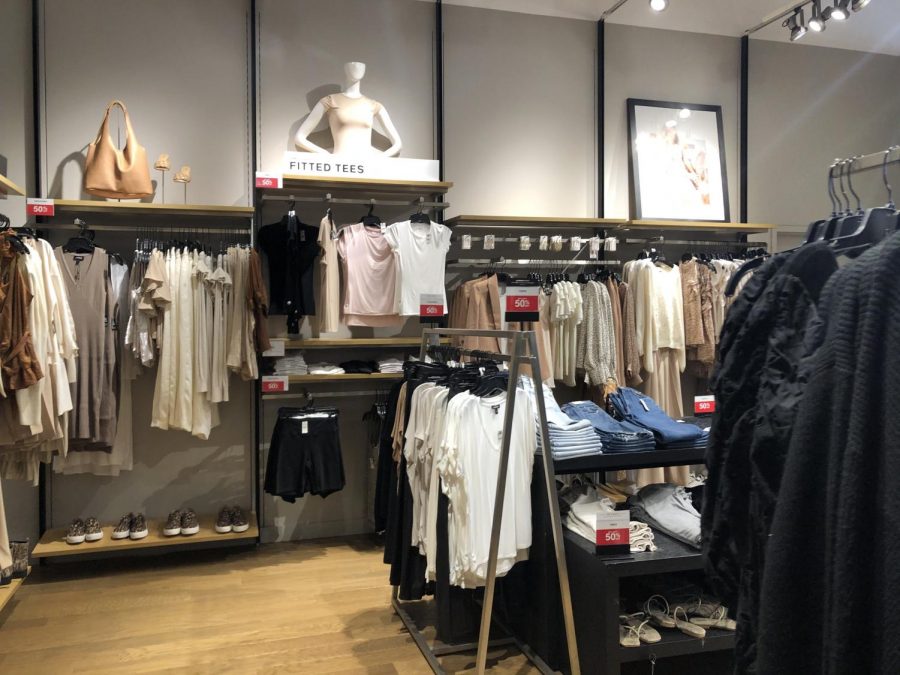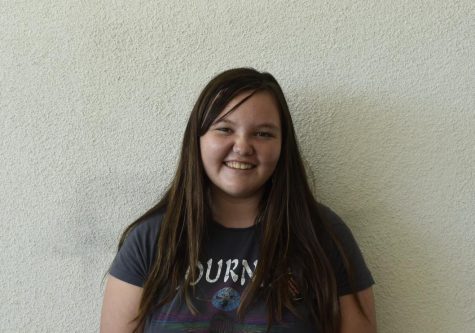Express, a clothing store located at the UTC La Jolla mall
Opinion: Everything wrong with the sizing industry
What’s wrong with the sizing situation these days, and what we can do about it?
April 23, 2021
Imagine this: you walk into a cute, trendy clothing store with some friends in tow. Ready to spend the money you worked so hard for, you peruse the racks of clothing with a sense of neutral yet peaked curiosity. You see something that sparks your interest- a cute pair of cutoff shorts that are way stylish. You check the sizes but are dismayed to find that the sizes only go up to a size ten. Although you don’t care about your size and are excited that so many options can exist for people smaller than a six, you can’t help but feel a bit disappointed. If shorts come in so many varieties for people under a size six, why can’t they come in many styles for people your size, as well? Putting the shorts back where they came from, you feel somewhat deflated.
The sad fact is, these scenes play out in thousands of stores every day. According to a study in the International Journal of Fashion Design, Technology and Education, women in America have an average pants size of sixteen, and female adolescents average about twelve. These statistics stand out so much because many clothing stores, like Urban Outfitters, Hollister, and Forever 21, don’t often even sell up to a size twelve. Between stacks and stacks of sizes below it, it’s just luck of the draw if you manage to snag a twelve, fourteen, or any further. It doesn’t end there though; as explained in a YouTube video by Sierra Schultzzie, a size twelve at different stories is bound to fit very differently…almost as if we shouldn’t scrutinize ourselves based on size and just find stuff that fits! Hmmm… well, that’s an idea.
Another issue with stores that sell clothing labeled as “one size fits all,” is that they are absolutely not one size fits all. That’s not even an option. While I enjoy the idea of getting something quickly without checking the size, that is not a possible option for our clothing needs. Imagine your best friends, and then imagine your aunts or uncles, cousins, and neighbors. Are they all the same size? Of course not. So you don’t have to be either.
Often most stores don’t carry above a size twelve, but when they do, the larger ones are considered “plus-sized” There is nothing wrong with being plus-sized; but it doesn’t make sense that half of the country would be considered plus-sized! Their argument here is that size twelve is the cutoff to being plus-sized; if that were the case, it is important to remember that a twelve is still a whole two sizes smaller than a woman’s average size in America. Allowing half of the country to be labeled plus-sized is not only downcasting upon people for being a certain size, but also fairly inaccurate.
But let’s get one thing straight—plus-sized does not mean “unhealthy” or “unworthy.” It just doesn’t. A slimmer, size zero model could be using unhealthy eating habits to stay that small, or they could be not happy with their lives or family. As the stereotype is that slimmer people are healthier, happier with their lives and overall more satisfied, the realization that this isn’t the case for anyone is a worthy piece of information to keep in mind. Similarly, when a person is labeled as plus-sized, it can bring to mind ideas of unhealthiness, dissatisfaction and more loneliness. However, that is not the case. A so-called “plus-sized” person could be having a happy and full lifestyle, and often do! Complete with proper exercise and good food.
Jameela Jamil, owner of I-Weigh, actress and activist, shared her thoughts on body-neutrality, and being internally confident in who you are, and I believe that ties into how we size and perceive size as well.
“I posted about what I weigh, which is my financial independence, that I’m self-made, that fact that I’m in a wonderful relationship, the cancer I’ve overcome, the struggles I’ve overcome, the things I’ve been through, the things I am still struggling with.” I think this is a wonderful way to think about it. If you can see past your sizing, you can see the beautiful qualities that you really weigh.
As she says, “I’m trying to teach people that it would be good business above anything else, or at least alongside being a good human being, to include these people in the story.” Here she is referencing people who usually get left out of the clothing story- Black people, Asian Americans, LGBTQIA members, women, disabled individuals, and people who don’t think they can fit into the so normalized “straight sizes.” Who should get to be a part of the story?
She is talking about the population in general who gets left out, but I can’t help but think of the scene at the beginning of this opinion. What if more people were represented in the clothing that was sold in stores? What if a person who was a size sixteen could find a piece of clothing as fast and as easily as a person who was a size six?
These are huge issues, and they aren’t going to be changed overnight. But, there are things we can do. When you purchase a shirt, think about where you’re purchasing it from- do they offer lots of different sizes, or are they pretty minimal? Overall, just think about someone who is not yourself—someone who may fit into the sizes easily and someone who may not. Shoes being sold at a clothing store or not, kick yours aside and try stepping into someone else’s. It might be a cool experience—what did you find out?
“I set out to help women and they ended up fixing me in ways that I didn’t even know I needed to be fixed. I’m the strongest and most powerful I have ever felt and it’s because of the women who have sent me their I-Weigh stories,” Jamil says. Keep in mind that this is a slim, famous actress saying this—anyone can completely struggle with their self-image, and the sizing inequalities in the world aren’t doing anything to help it.
Sizing can be super amazing—it helps us know what would fit us well—and it saves a lot of time while shopping. Fashion is delightful and I personally adore spending time sifting through racks of clothes, finding the fit I like for myself. But it’s not a person’s real identity; and that’s where the story gets muddled. Other than the fact that the availability of sizes can make us feel deflated, sometimes it’s the importance we put on them making the difference.
When you’re killing it at what you’re good at, or working at what makes you internally happy—I will not be thinking about your size. Let’s make these large companies give us stuff in our clothing size, but let’s also know that’s not what defines us. It’s the bigger stuff, the us that defines us—no one is who they are simply because of the size of their skirt.


